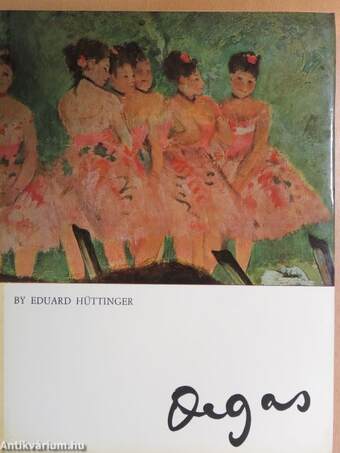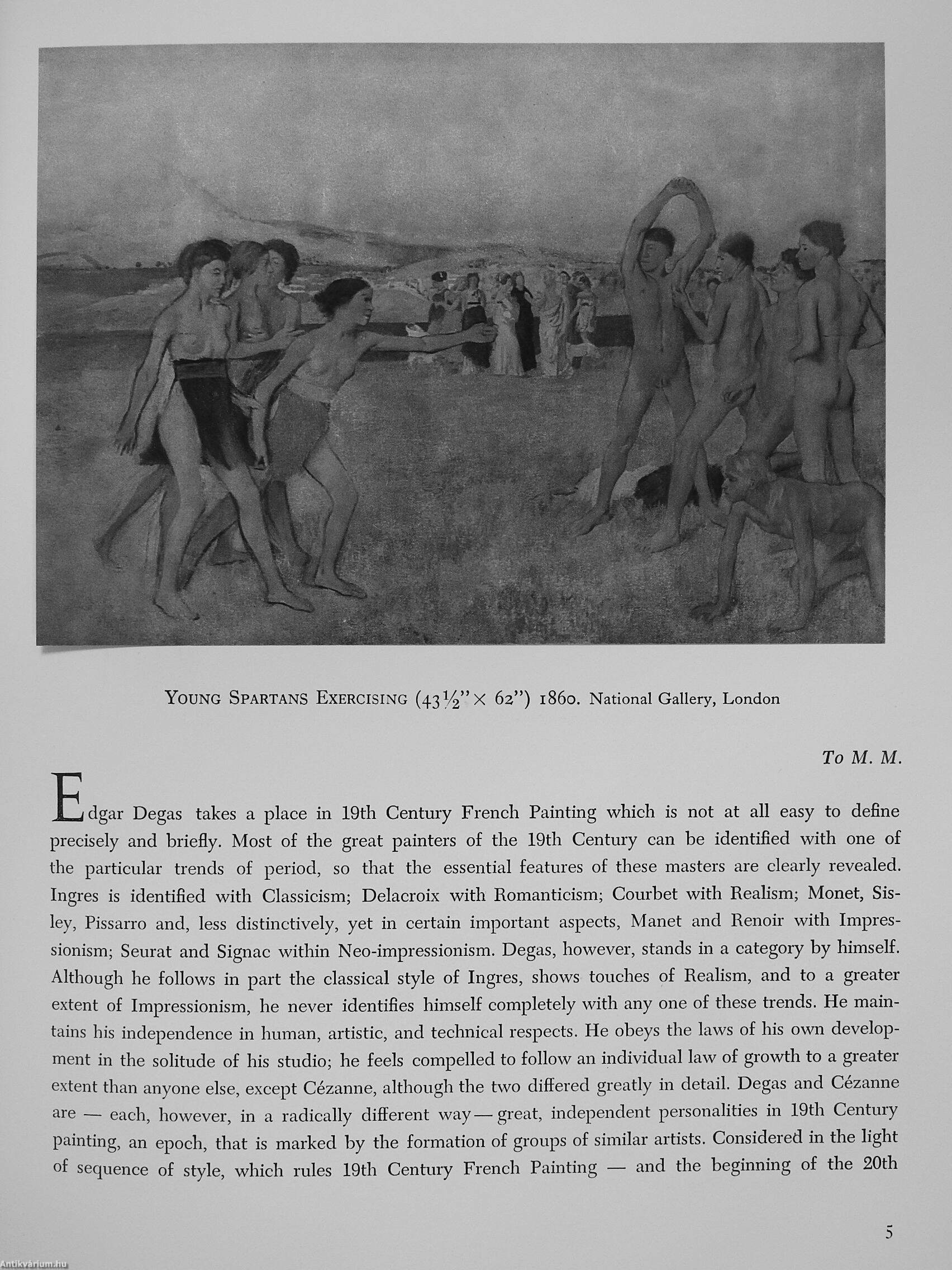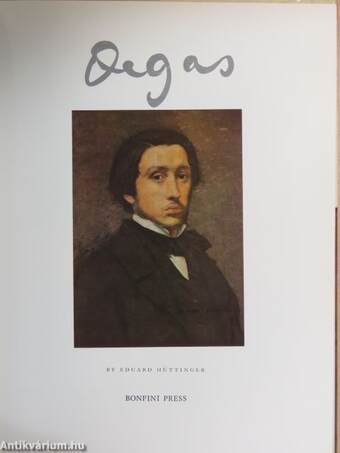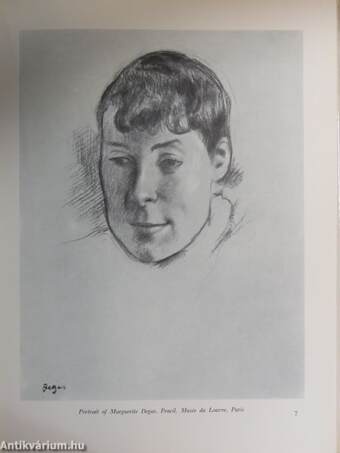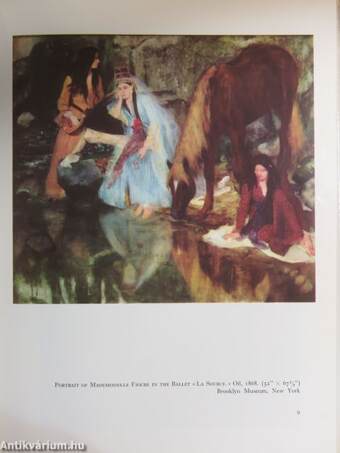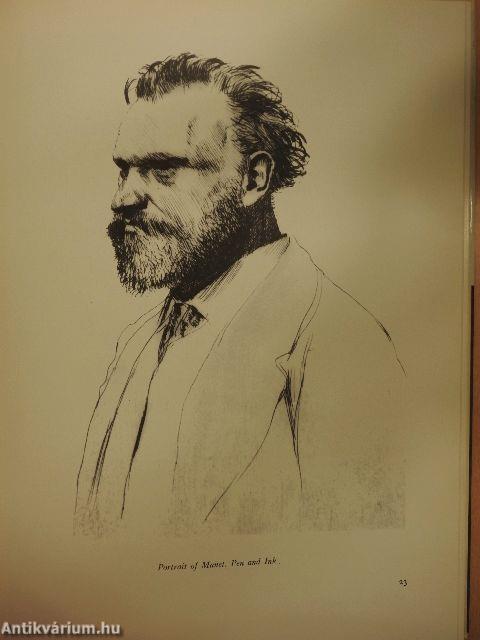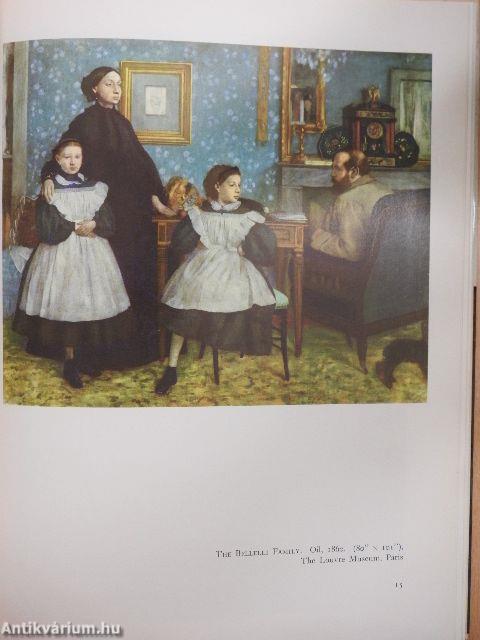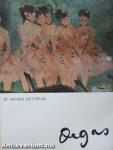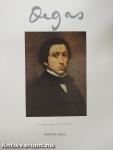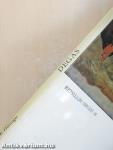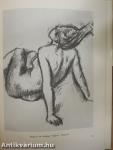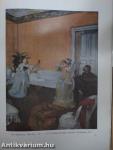1.067.327
kiadvánnyal nyújtjuk Magyarország legnagyobb antikvár könyv-kínálatát

VISSZA
A TETEJÉRE
JAVASLATOKÉszre-
vételek
Degas
| Kiadó: | Bonfini Press |
|---|---|
| Kiadás helye: | Switzerland |
| Kiadás éve: | |
| Kötés típusa: | Fűzött keménykötés |
| Oldalszám: | 93 oldal |
| Sorozatcím: | Bonfini Monographs |
| Kötetszám: | |
| Nyelv: | Angol |
| Méret: | 28 cm x 21 cm |
| ISBN: | |
| Megjegyzés: | Fekete-fehér és színes reprodukciókkal. |
naponta értesítjük a beérkező friss
kiadványokról
naponta értesítjük a beérkező friss
kiadványokról
Előszó
TovábbFülszöveg
DEGAS
by Eduard Hüttinger
Edgar Degas occupies a unique position in the gallery of nineteenth-century French painters. Although his work shows the imprint of the classicism of Ingres as well as the influences of realism and Impressionism, it cannot be identified wholly with any of these trends; rather it displays an independence and fluidity, with a broad range from classicism to Fauvism.
He found inspiration in the Italian primitives of the fifteenth century, but his work shows a conscious and original reflection of his own era. Degas was in accord with many of the principles of Manet and other Impressionists of his time but developed a highly personal style. His most frequent themes were aspects of urban French life: racetracks, cabarets, circus rings, theaters and music halls. He made many studies of pleasure-seekers of a gaily-lit city after dark, of women in boudoir or bath, dancers at the ballet or practice bar, of laundresses, milliners and rouged ladies of the evening.... Tovább
Fülszöveg
DEGAS
by Eduard Hüttinger
Edgar Degas occupies a unique position in the gallery of nineteenth-century French painters. Although his work shows the imprint of the classicism of Ingres as well as the influences of realism and Impressionism, it cannot be identified wholly with any of these trends; rather it displays an independence and fluidity, with a broad range from classicism to Fauvism.
He found inspiration in the Italian primitives of the fifteenth century, but his work shows a conscious and original reflection of his own era. Degas was in accord with many of the principles of Manet and other Impressionists of his time but developed a highly personal style. His most frequent themes were aspects of urban French life: racetracks, cabarets, circus rings, theaters and music halls. He made many studies of pleasure-seekers of a gaily-lit city after dark, of women in boudoir or bath, dancers at the ballet or practice bar, of laundresses, milliners and rouged ladies of the evening.
Degas in time perfected a distinctive technique, breaking up open spaces into new planes, placing objects squarely on the canvas, with the immediacy of a contemporary camera image. Degas' emphasis on design differentiates his style most clearly from the work of the Impressionists. He attached major importance to line and draftsmanship and preferred to work in pastels, where he could draw and paint. His handling of mass and color gives them an enchanted life of their own, far removed from prosaic naturalism.
The Swiss art historian Edouard Hiittinger has provided an exhaustive study of Degas' complex art, analyzing with equal care its historical significance and its surprising modernity. The illustrations selected comprise a graphic cross-section of the artist's work. Famous paintings are supplemented by less familiar works; some are reproduced in color here for the first time. This is a book which encompasses all aspects of the life and work of this great French painter.
Picture on the Front Cover:
Dancers, 1872 Detail of the painting: Musicians of the Orchestra (27%e"X 19%") Staedelsches Institut, Frankfort
Picture on the Back Cover: Before the Races (Detail), 1878 (15%"X35Vio")
Emil G. Buehrle Collection, Zurich Vissza
Témakörök
- Idegennyelv > Idegennyelvű könyvek > Angol > Művészetek > Festészet
- Idegennyelv > Idegennyelvű könyvek > Angol > Művészetek > Művészettörténet, általános
- Művészetek > Művészettörténet általános > Kontinensek művészete > Európa
- Művészetek > Művészettörténet általános > Idegen nyelv > Angol
- Művészetek > Festészet > Korszakok, stílusok > XIX. század > Impresszionizmus
- Művészetek > Festészet > Idegen nyelv > Angol
- Művészetek > Festészet > Tanulmányok, összefoglalók > Külföldi
- Művészetek > Festészet > Albumok > Külföldi festők
- Művészetek > Festészet > Általános festészet > Története



